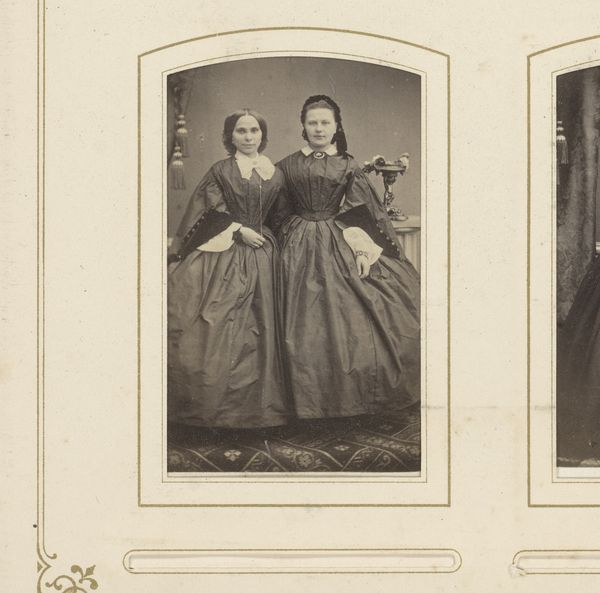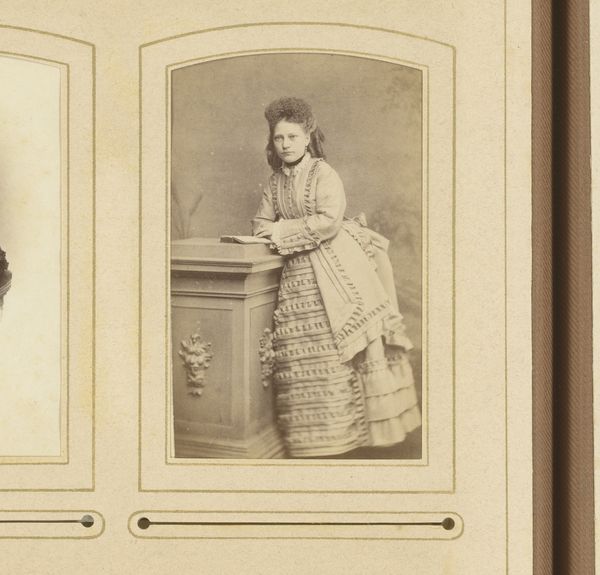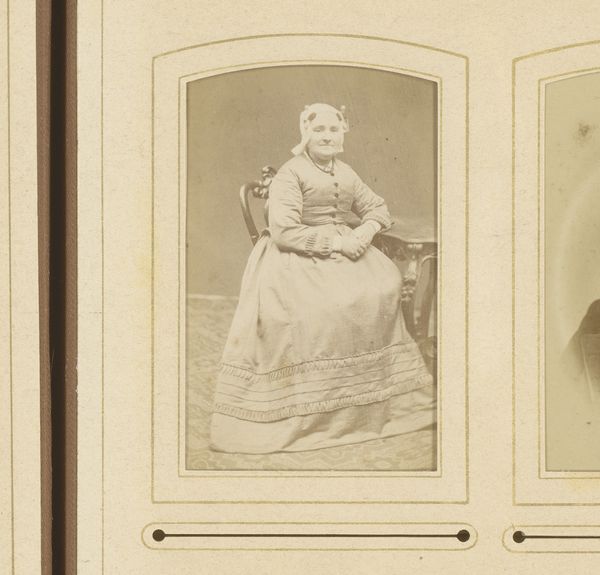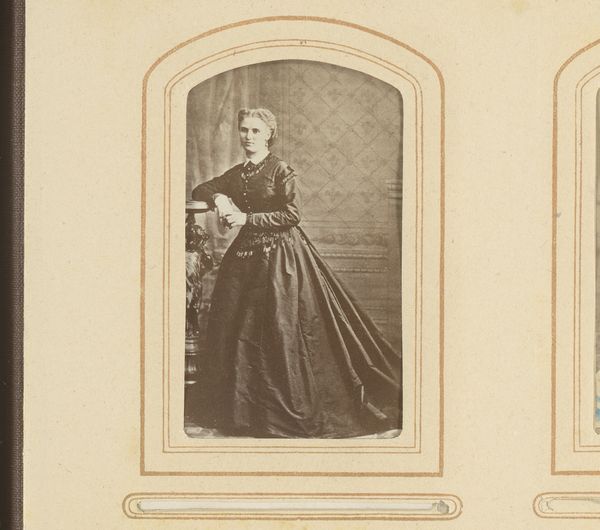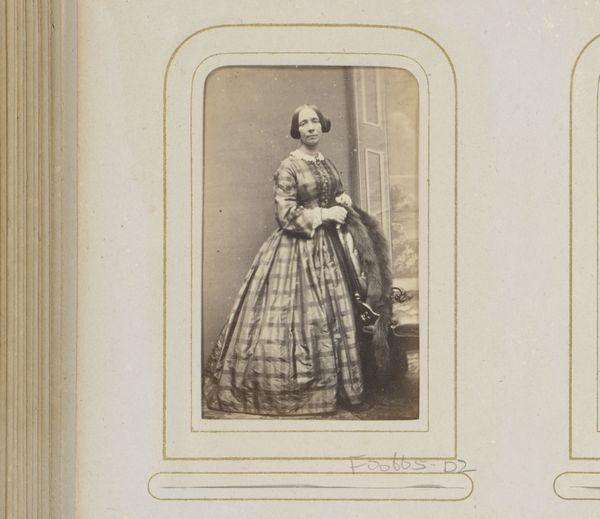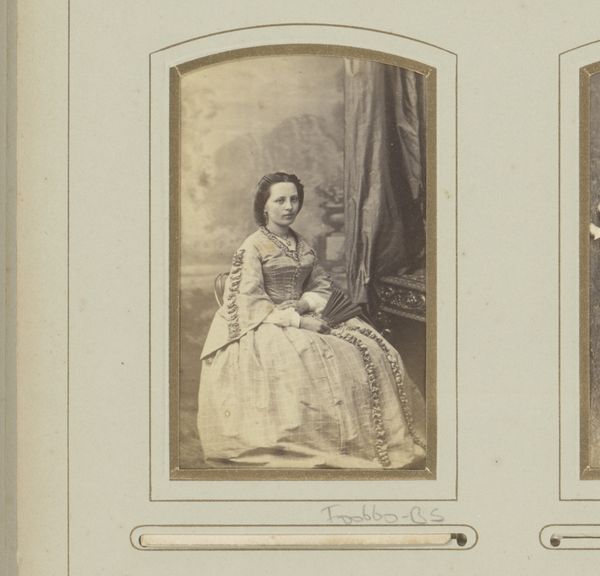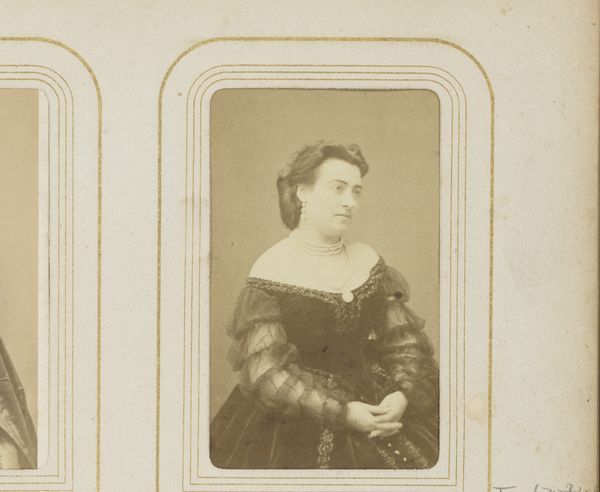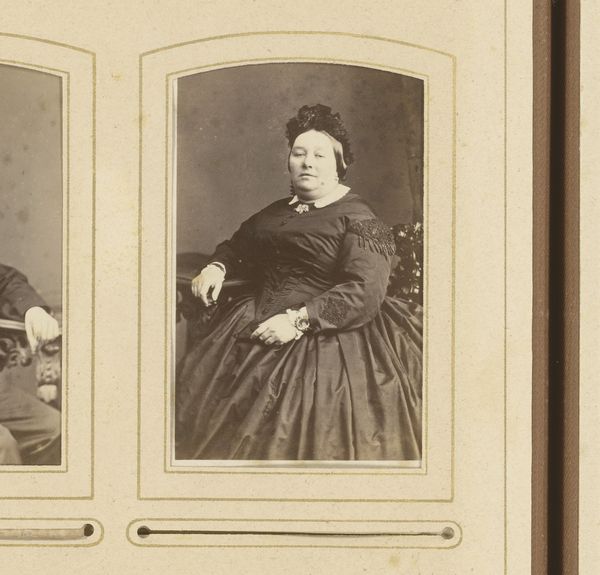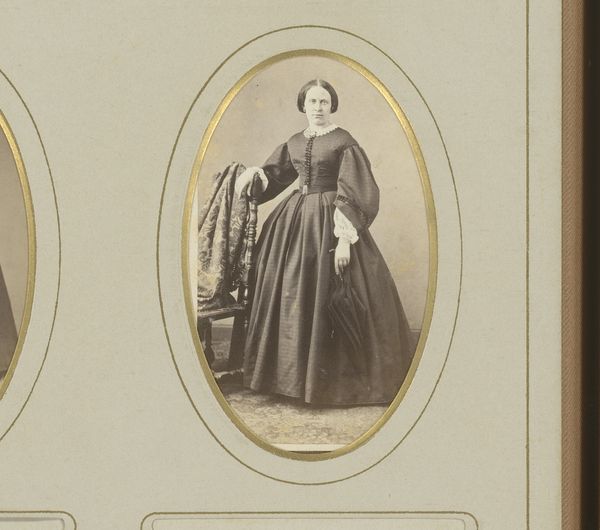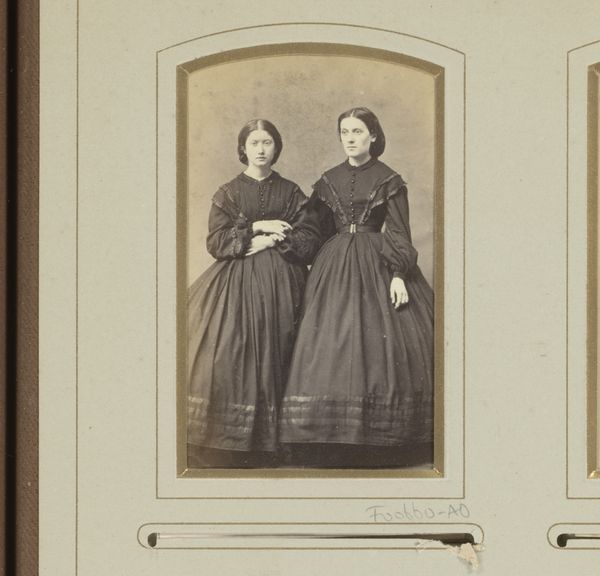
photography
#
portrait
#
photography
#
19th century
#
academic-art
Dimensions: height 85 mm, width 51 mm
Copyright: Rijks Museum: Open Domain
Curator: What a stately, yet melancholic portrait. The sepia tones enhance the somberness of this 19th-century photograph, titled "Portret van een vrouw bij een sokkel," or "Portrait of a Woman by a Pedestal," believed to be the work of Th. Schütz. Editor: Yes, there’s a formality, a weight in the scene that I feel instantly. The sheer amount of fabric in that dress... think of the labor, the materials—the industrial mills churning out that textile, the seamstresses meticulously layering all those ruffles! Curator: Indeed, that dress is fascinating, but also consider the symbolic implications of its dark color. The starkness could represent mourning, restraint, but also a certain austere respectability, which aligned with Victorian ideals. And note how she’s posed next to that pedestal and urn—common symbols of memorial and enduring virtue. Editor: But it's all a constructed reality. The column, the urn - they're theatrical props. And her stillness. The portrait session itself would have been laborious and extended, demanding complete control over the body and breath. Think of the sitter as raw material and how labor transmutes them. Curator: But there is something real here, though. Notice her gaze: It’s direct, almost challenging. She seems aware of being observed, even judged, but also determined to present a specific image of herself for posterity. What that book in her hands may suggest - reading, studying... education was certainly a means to both emancipation and higher social position. Editor: A prop just as easily as the pillar, perhaps! These photographic processes made image production cheaper and more available than painted portraits, which also implies democratization to the world. Now people of more various class positions, could leave visual evidence of themselves. Curator: So, by framing it through her clothes and adjacent objects, we can try to frame this person from long ago. Editor: Exactly, it gives the material base for an individual from the past.
Comments
No comments
Be the first to comment and join the conversation on the ultimate creative platform.
